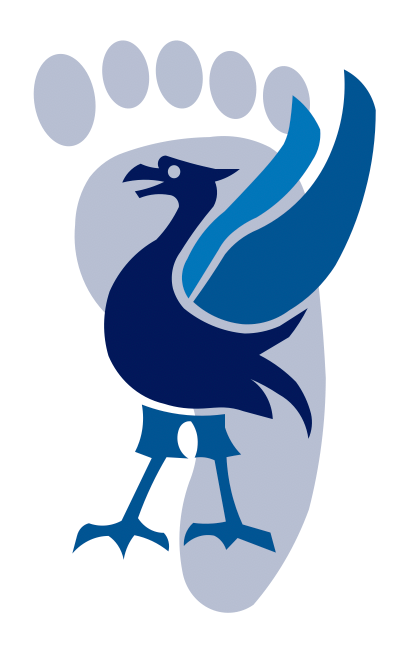
Prof Mason
Liverpool Foot and Ankle Clinic
To book an appointment, either email or phone the number below or click the link.
E-mail: CVDWclerical@outlook.com
Contact Patient Liaison: 07717580737
Morton's Neuroma
Morton’s neuroma is a painful condition affecting the ball of the foot, most commonly between the third and fourth toes. It's a misnomer, as it is not a true neuroma (an overgrowth of a nerve) but instead occurs when the tissue around one of the nerves leading to the toes thickens (neural fibrosis), often as a result of irritation, injury, or pressure. This thickening compresses the nerve, causing sharp or burning pain, tingling, or numbness in the toes. People often describe the sensation as if they're "walking on a marble."
What are the causes of a Morton's neuroma?
Morton’s neuroma is caused by irritation, pressure, or injury to one of the nerves leading to your toes. Several factors can contribute to this irritation and lead to the development of the condition:
- Footwear:
- Tight or Narrow Shoes that squeeze the toes Can compress the nerves in the ball of the foot, leading to irritation.
- High Heels place more pressure on the forefoot, which can compress the nerves between the toes, increasing the risk of developing a neuroma.
- Foot Abnormalities:
- Flat Feet or High Arches can cause instability in the toe joints, leading to increased pressure and nerve irritation.
- Bunions or Hammertoes can alter the structure of the foot and add pressure to the nerves.
- Repetitive Stress:
- High-Impact Sports such as running, basketball, or tennis that involve repetitive foot impact or pressure on the ball of the foot can increase the likelihood of developing a neuroma.
- Jobs that require prolonged periods of standing or walking on hard surfaces, or the wearing of steel toe caps can also put excessive stress on the feet.
- Injury or Trauma:
- A direct injury to the area between the toes, such as a sprain or fracture, can cause damage to the nerves, leading to the development of Morton’s neuroma
- Poor Foot Mechanics:
- Poor biomechanics, such as improper gait or tight calfs (e.g. Gastrocnemius), can lead to abnormal distribution of weight on the foot, increasing pressure in the areas most susceptible to Morton’s neuroma.
- Previous Foot Surgery:
- Some foot surgeries may alter the structure of the foot, which can increase pressure on the nerves and potentially lead to the condition.
Preventive measures, such as wearing proper footwear, reducing repetitive stress on the feet, and addressing foot abnormalities early, can reduce the risk of developing Morton’s neuroma.
Symptoms
The symptoms of Morton’s neuroma typically develop gradually and can worsen over time. The most common symptoms include:
Pain in the Ball of the Foot:
- A sharp, burning pain is often felt in the ball of the foot, particularly between the third and fourth toes. The pain may worsen during activities like walking, standing, or wearing tight shoes.
Numbness or Tingling in the Toes:
- Many people experience numbness, tingling, or a pins-and-needles sensation in the toes near the affected nerve. This can radiate from the ball of the foot to the tips of the toes.
A Feeling of "Walking on a Pebble:
- Some describe the sensation as if they are walking on a small stone or marble inside their shoe. This is often due to the irritation or thickening around the nerve.
Toe Cramping:
- The toes may feel cramped or curled, especially after walking or standing for long periods.
Worsening Symptoms When Wearing Certain Shoes:
- Tight shoes, high heels, or shoes with narrow toe boxes can aggravate the symptoms by putting additional pressure on the nerve. The pain may subside when the shoes are removed.
Pain Relieved by Rest
- In the early stages, the symptoms may subside with rest or by removing shoes, but they often return with activity.
-

What are the treatments for Morton's Neuroma?
Treatment options vary depending on the severity of symptoms and can range from conservative to surgical interventions.
Conservative (Non-Surgical) Treatments:
- Footwear Modification:
- Wider Shoes: Wearing shoes with a wider toe box and avoiding high heels can reduce pressure on the nerve.
- Orthotic Inserts: Custom or over-the-counter orthotic devices can help distribute pressure more evenly across the foot.
- Padding or Taping:
- Metatarsal Pads: These can help relieve pressure on the affected nerve.
- Foot Taping: Taping techniques can offload the pressure from the nerve by altering foot mechanics.
- Medications:
- NSAIDs (Nonsteroidal Anti-Inflammatory Drugs): Over-the-counter pain relievers, such as ibuprofen, can help reduce pain and inflammation.
- Physical Therapy:
- Exercises to stretch and strengthen the foot muscles may help alleviate symptoms and improve foot mechanics.
- Injections:
- Corticosteroid Injections: Steroid injections can reduce inflammation and provide temporary relief.
- Icing and Rest:
- Applying ice packs to reduce swelling and resting the foot can help alleviate symptoms.
Surgical Treatments:
If conservative treatments fail to provide relief, surgery may be recommended. Surgical options include:
- Nerve Decompression:
- The surgeon can release the tight ligaments or structures pressing on the nerve.
- Nerve Removal (Neurectomy):
- In more severe cases, removing the affected nerve may be necessary. This can relieve pain, but may result in some permanent numbness in the affected toes.
Other Advanced Treatments:
- Cryotherapy:
- This involves freezing the affected nerve to reduce pain and inflammation.


Cryotherapy
Cryotherapy uses extreme cold temperatures to freeze and damage the thickened nerve tissue that causes pain in Morton’s neuroma. The process disrupts the nerve’s ability to send pain signals, providing relief. Over time, the damaged portion of the nerve either heals or regenerates, often without the thickened tissue, leading to lasting pain reduction.
FAQs
What are the benefits of cryotherapy?
Minimally Invasive: The procedure is usually done in an outpatient setting and doesn’t require general anesthesia.
Quick Recovery: Most patients can resume normal activities within a few days, although more strenuous activities should be avoided for a short period.
Low Risk of Complications: Since the procedure is minimally invasive, the risk of infection or other complications is generally lower compared to surgery.
Preservation of Sensation: Unlike neurectomy (nerve removal), cryotherapy aims to preserve nerve function and sensation after healing.
What is the recovery of cryotherapy?
 Button
ButtonRecovery is usually quick, with most patients experiencing only mild discomfort, bruising, or swelling at the treatment site.
Most people can return to wearing normal shoes and performing daily activities within a week, though high-impact activities should be avoided for a little longer.
What are the risks of cryotherapy?
 Button
ButtonPotential side effects include temporary bruising, swelling, and numbness at the treatment site.
In rare cases, some patients may experience prolonged numbness or recurrence of symptoms if the nerve regenerates.

